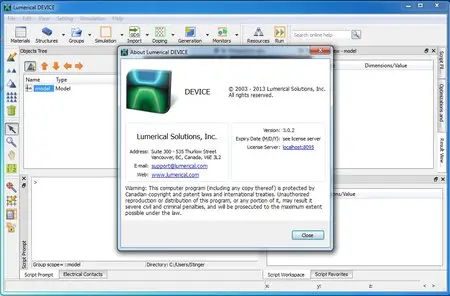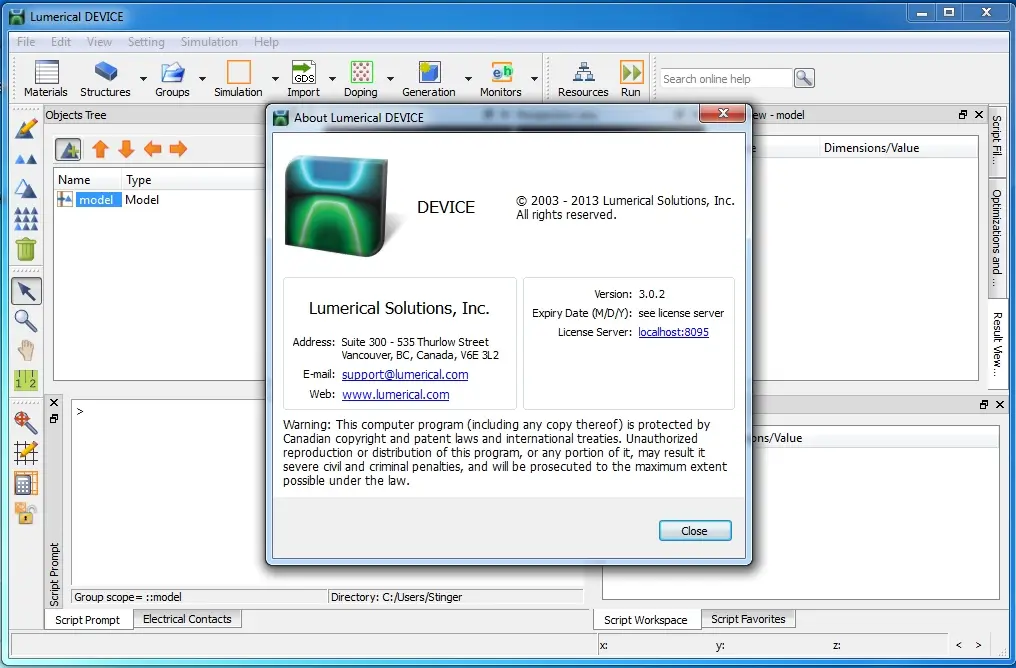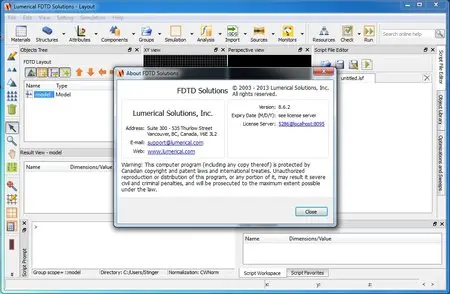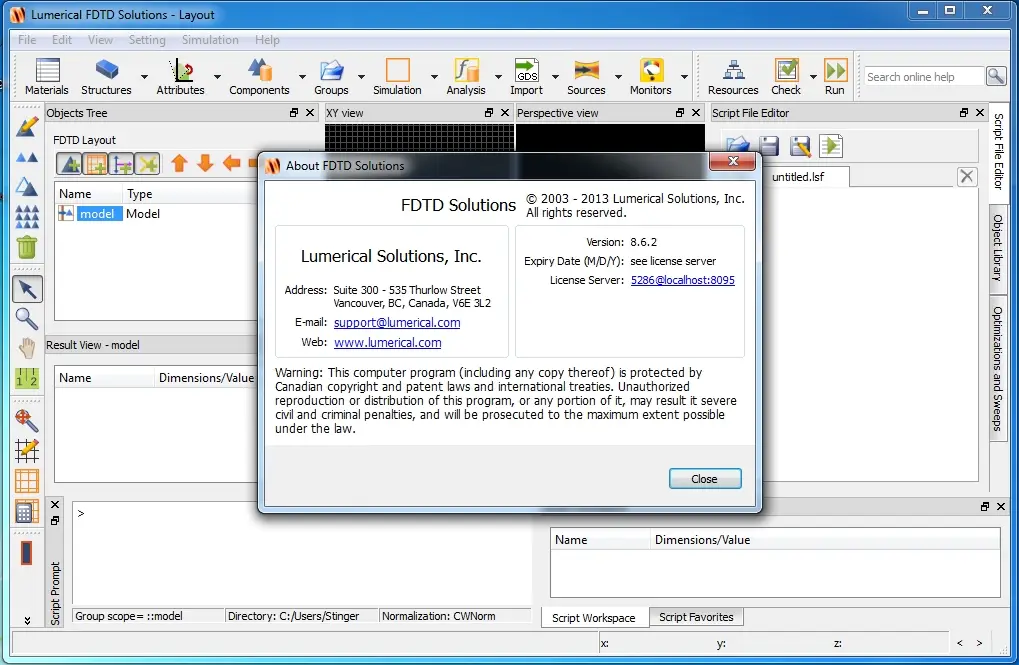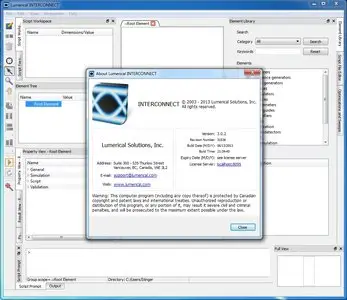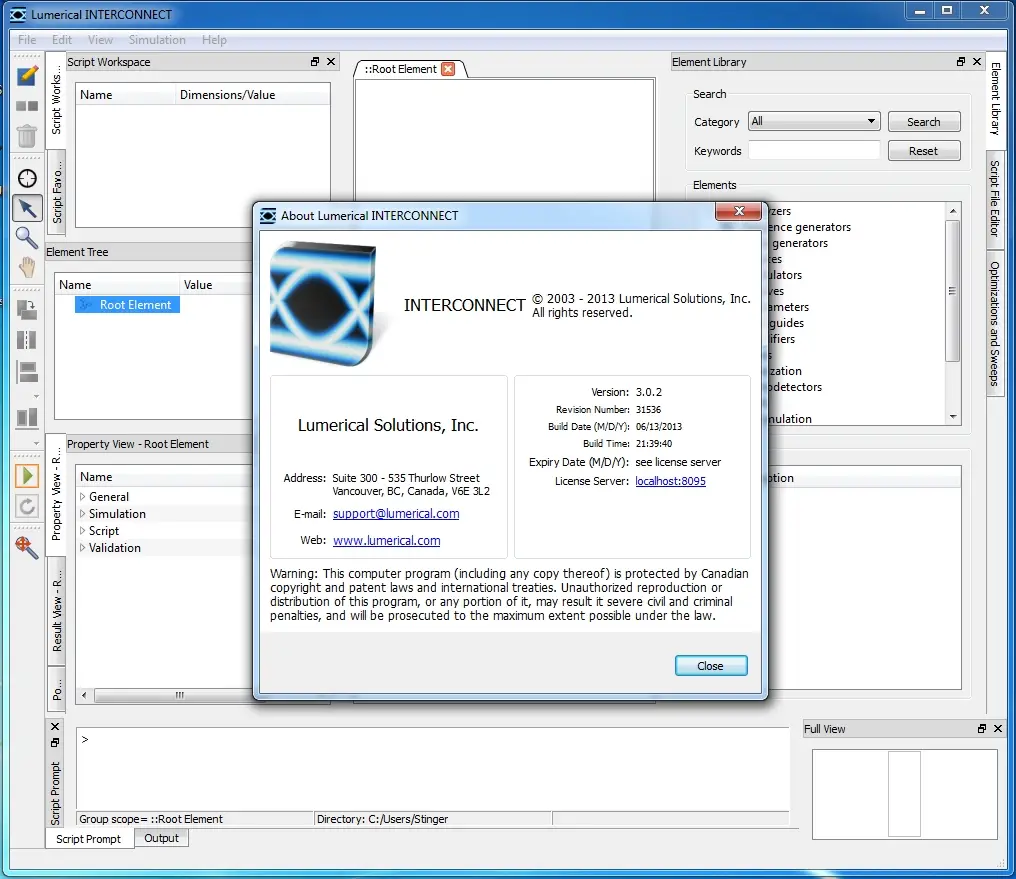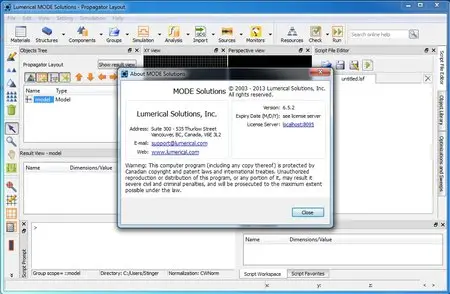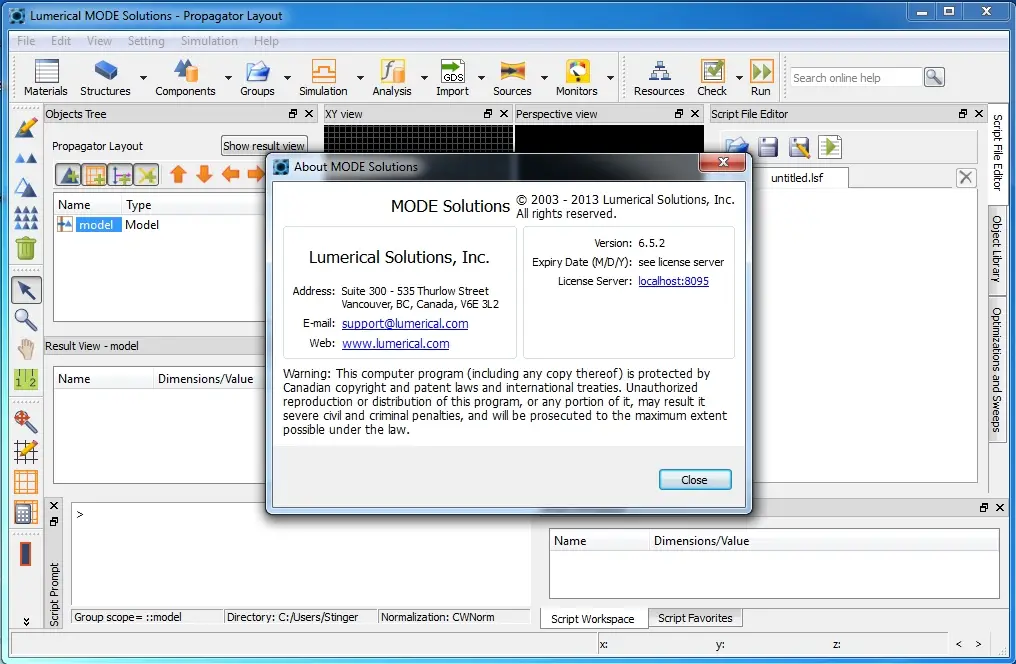Lumerical 2013b Suite | 1.9 Gb
Lumerical Solutions, Inc., a global provider of photonic design software, announced 2013b release which provides significant improvements to all of Lumerical’s products, and includes releases of FDTD Solutions 8.6, MODE Solutions 6.5, INTERCONNECT 3.0 and DEVICE 3.0. This 2013b release will reinforce Lumerical’s status as the most frequently referenced vendor of dedicated photonic design tools by R&D professionals.
Release Highlights: Passive and Active Photonic Component Design
DEVICE 3.0 introduces true 3D electrical simulation and visualization with an advanced finite element drift-diffusion solver. Enhancements to performance, including support for multi-core CPUs, now allow engineers to rapidly create, simulate, and analyze virtual prototypes of active optoelectronic devices. MODE Solutions 6.5 introduces nonlinear and active material modeling to waveguide based components. These developments will benefit a wide range of designers, for example:
- CMOS image sensor pixel designers will benefit from complete 3D component simulation, and can accurately calculate performance metrics including dark current, quantum efficiency, spectral cross-talk as well as the transient response under switched illumination.
- High-speed modulator designers can now model the charge injected into complex geometries, and import those results into MODE Solutions 6.5 as a function of applied voltage to calculate insertion loss, modulation depth and 3dB modulation bandwidth.
- Waveguide component designers interested in waveguide nonlinearities, amplification and the response of such systems to applied transients can now use the Flexible Material Plugins previously released in FDTD Solutions within MODE Solutions 6.5.
Release Highlights: Photonic Integrated Circuit Design
“Over the past year, I’ve been having in depth conversations with many groups who are actively designing photonic integrated circuits for operation within high speed electronic systems,” says Dr. Jackson Klein, Senior Product Manager for INTERCONNECT. “We have consistently been hearing that current EDA design capabilities lack a sophisticated treatment of photonic circuits, like that provided by INTERCONNECT. We’re collaborating with Mentor Graphics, Agilent Technologies, OpSIS and other parties to ensure that INTERCONNECT includes a number of features that are essential for next generation photonic integrated circuit design.”
INTERCONNECT 3.0 includes:
- The ability to import an optical SPICE netlist and create a corresponding PIC schematic, facilitating the analysis of optical circuit representations within third-party EDA tools including Mentor Graphics’ Pyxis.
- File transfer that supports Agilent Advanced Design System and Mentor Graphics Eldo time domain waveform formats.
- Enhanced support for the development of process design kits (PDKs) with the inclusion of an extensive library of customizable compact models and lookup tables containing design intent parameters.
- An expanded element library, including a ring modulator element for the fast and accurate simulation of cascaded rings and elements to better simulate the electrical portion of mixed-signal circuits.
About Lumerical
Since 2003, Lumerical has pioneered breakthrough simulation technologies that have helped bring new photonic and optoelectronic product concepts to life. By empowering R&D professionals with high performance photonic design software that leverages ongoing advances in computing technology, Lumerical helps designers tackle challenging design goals and meet deadlines. Lumerical's products are used in nearly 40 countries by global technology leaders including ASML, Bosch, Olympus, Philips, Samsung, and STMicroelectronics, and prominent research institutions including Caltech, Harvard, Max Planck Institute, MIT, NIST and the Chinese Academy of Sciences.
visit my blog
Name: Lumerical
Version: 2013b Suite
Home: www.lumerical.com
Interface: english
OS: Windows XP / Vista / Seven
Size: 1.9 Gb
Special Thanks 0mBrE
Recovery volumes or .rev files are special files which can be created by WinRAR/RAR and allow you to reconstruct missing and damaged files in a volume set. They can
only be used with multi-volume archives.
This feature may be useful for backups or, for example, when you post a multivolume archive to a newsgroup and some of the subscribers did not receive some files. Reposting recovery volumes instead of usual volumes may reduce the total number of files to repost.
Each recovery volume is able to reconstruct one missing RAR volume. For example, if you have 30 volumes and 3 recovery volumes, you are able to reconstruct any 3 missing volumes. If the number of .rev files is less than a number of missing volumes, reconstructing is impossible. The total number of usual and recovery volumes must not exceed 255 and the number of recovery volumes must be less than the number of RAR volumes.
WinRAR reconstructs missing and damaged volumes either when clicking on .rev file, or when using rc command or automatically, if it cannot locate the next volume and finds the required number of .rev files when unpacking.
You may use the "Recovery volumes" option in the Archive name and parameters dialog or a similar option also appears in the Protect archive command to create recovery volumes. In the command line mode you may do it with -rv switch or rv command.
Original copies of damaged volumes are renamed to *.bad before reconstruction. For example, volname.part03.rar will be renamed to volname.part03.rar.bad.
From Win-rar.com
only be used with multi-volume archives.
This feature may be useful for backups or, for example, when you post a multivolume archive to a newsgroup and some of the subscribers did not receive some files. Reposting recovery volumes instead of usual volumes may reduce the total number of files to repost.
Each recovery volume is able to reconstruct one missing RAR volume. For example, if you have 30 volumes and 3 recovery volumes, you are able to reconstruct any 3 missing volumes. If the number of .rev files is less than a number of missing volumes, reconstructing is impossible. The total number of usual and recovery volumes must not exceed 255 and the number of recovery volumes must be less than the number of RAR volumes.
WinRAR reconstructs missing and damaged volumes either when clicking on .rev file, or when using rc command or automatically, if it cannot locate the next volume and finds the required number of .rev files when unpacking.
You may use the "Recovery volumes" option in the Archive name and parameters dialog or a similar option also appears in the Protect archive command to create recovery volumes. In the command line mode you may do it with -rv switch or rv command.
Original copies of damaged volumes are renamed to *.bad before reconstruction. For example, volname.part03.rar will be renamed to volname.part03.rar.bad.
From Win-rar.com
All parts on filepost.com, rapidgator.com, luckyshare.net interchanged. It is added by 5% of the overall size of the archive of information for the restoration and the volume for the restoration
No mirrors please
No mirrors please




